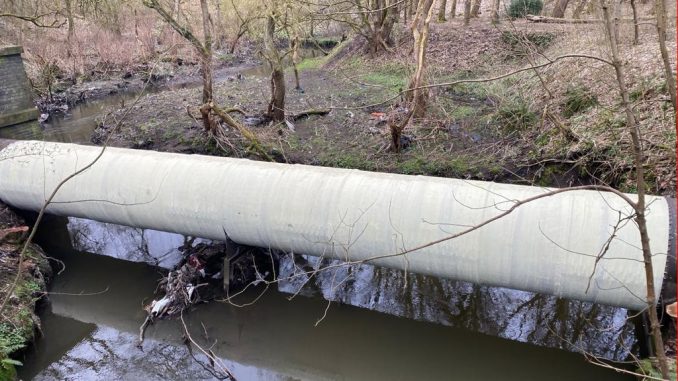
The phrase ‘prevention is better than a cure’ is attributed to the 16th century Dutch philosopher Desiderius Erasmus. It is one that rings true over 500 years later, especially when it comes to pipe reinforcement.
Erasmus’ message was a simple one – it is easier to stop something from happening in the first place than it is to repair the damage after it has happened.
In pipe terms, preventing leaks and bursts happening is preferable to finding pipe repair solutions once lines become breached and fluid is escaping.
The way to prevent pipe failure is by carrying out reinforcement before holes and cracks can develop. To refurbish weakened pipes or strengthen new lines during the installation process is to protect them against corrosion, chemical attack and general wear and tear. This protection in turn extends the lifespan of pipes.
In the spirit of Erasmus, we are going to look at three relatively straightforward and cost-effective ways in which pipe reinforcement can take place.
Pipe reinforcement using a composite repair wrap
A composite repair wrap is used to create an impact resistant shell around the outside of a pipe, encompassing the line and increasing its hoop strength.
Most pipe repair bandages come with a water-activated resin. When dipped, soaked or sprayed with water, the bandage begins to cure to form a rock hard material.
Whilst this curing takes place, the bandage can be wrapped and moulded around the outside of a pipe. It will adhere to structures and depending on the cure time of the resin, can set in a matter of minutes to form a protective sleeve over a pipe.
Composite repair wraps are effective on all kinds of pipe, including steel, copper, malleable iron, GRP, ceramic, clay, and most plastics.
They can be wrapped around difficult sections of pipework – such as pipe elbow bends – and can be applied underwater, enabling the reinforcement of major undersea pipelines.
The appeal of the pipe repair bandage is in its simplicity. As long as there is enough room to wrap the pipe, then a pipe bandage can be applied simply by wrapping and smoothing as you go.
Brushable epoxy coating for pipe reinforcement
Painting a brushable epoxy coating over a pipe creates an impermeable membrane, protecting and strengthening lines against external and internal damage.
Take a product like Liquid Metal for example. Liquid Metal is essentially a metal-filled paint. When applied to pipes and other metal work, it cures to form a hard-wearing metallic surface to shield against every kind of attack.
Corrosion and chemicals can no longer trouble the original pipe surface because of the outer shell provided by the epoxy coating.
Should the original pipe suffer a break from inside, then still nothing can escape as this outer shell acts as a new layer of metalwork.
Using an epoxy coating is easy. You simply mix the two components together and paint onto the pipe requiring reinforcement. Numerous coats can be applied, building up thickness to the required levels.
For additional reinforcement, a composite repair wrap can be applied over a brushable epoxy whilst it remains sticky.
Rebuilding a weakened pipe using an epoxy paste
When a specific section of pipeline has become severely degraded in thickness, then it is necessary to rebuild the pipe as a means of reinforcement.
This is done using epoxy paste. A paste is thicker than a brushable coating and is applied using a putty knife or hand tool rather than a brush.
The resin and hardener are mixed together and the putty is then spread over the area of pipe requiring reinforcement. The putty will then set, forming a material as hard as steel which bonds permanently to the pipe to significantly increase the thickness of the original line.
Just as with epoxy coatings, the reinforcement can be enhanced by applying a pipe repair bandage over the top of the section which has been strengthened and rebuilt using epoxy paste.
Epoxy pastes are most frequently used for reinforcement in harsh and aggressive environments. One of the best examples we have seen comes from the repair of a 100mm sulphuric acid pipe at a petrochemical plant in Saudi Arabia.
The line had degraded from 22mm thickness to just 1mm on an elbow bend. Industrial Metal Epoxy Paste was used to rebuild it, adding 22mm of thickness.
When the corrosive content of the pipe now ate away at the remaining 1mm of original pipe, it would still be contained by a new metal shell formed by the epoxy paste.
Without the reinforcement of the line, the pipe would have been breached and sulphuric acid able to escape at the 22 bar pressure the line operated under.
Imagine trying to repair the damage of such a failure. Erasmus really was right when he said prevention is better than a cure.

Leave a Reply